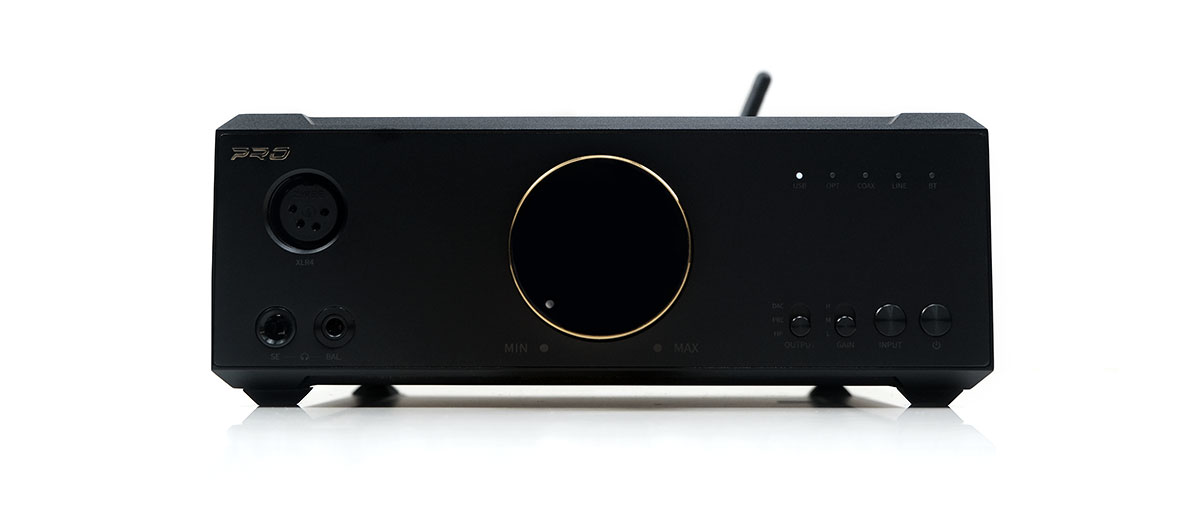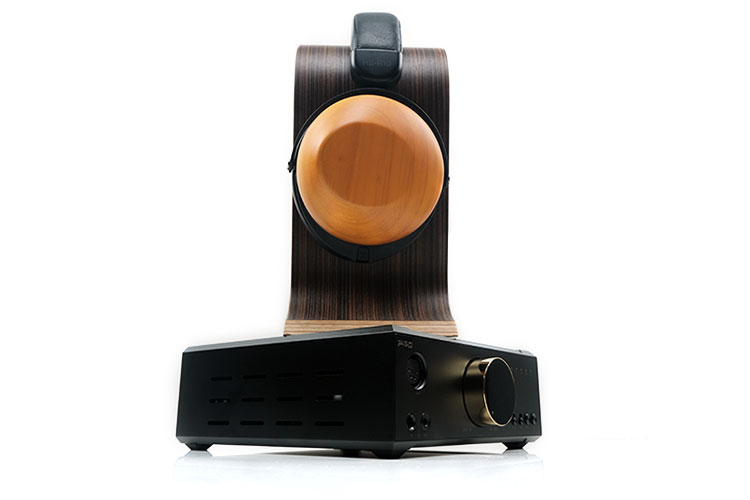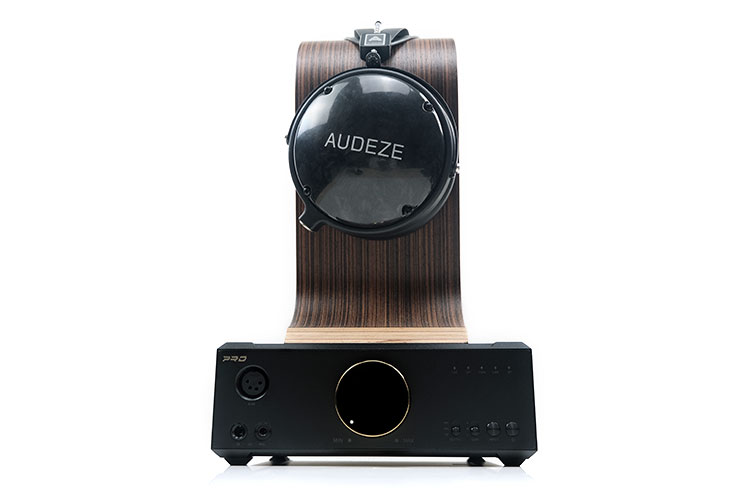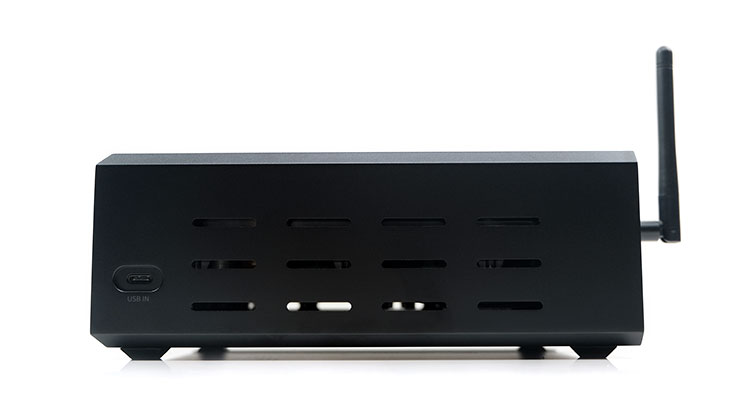Sound Impressions
Summary
The K9 Pro ESS delivers a clean high energy sound signature heavy on dynamics and surprisingly detailed. This is a classic solid-state sound signature with a punchy, quick-paced tuning and an excellent well-defined note attack but slightly on the dry side with a very short decay. The term vivid is very apt to describe the listening experience.
Technically, the presentation is not too far off the M17 tuning to my ear which should not be surprising given the similar amplifier and DAC implementation.
The only real difference here is the slightly reduced headline figures for power output from the K9 Pro ESS and the ability to separate the DAC from the amplifier in terms of the input source. This in turn gives you a measure of control on some of that coloration and better flexibility for headphone/IEM matching.
For fans of the M17 then, the K9 Pro ESS is a bit of a bargain in terms of ‘bang for buck’ desktop performance. There are no issues with voltage and current headroom with all but the most demanding of headphones. Tested pairings such as Meze’s Empyrean, Audeze’s LCD-2 Closed, and HIFIMAN’s HE-R10D sounded extremely vivid and engaging.
IEM pairings are just as satisfying with the low gain option providing a clean, hiss-free, black background as well as a smooth non-aggressive level of volume control. Sensitive IEM users should have no issues either with the K9 Pro ESS’s sub-1Ω impedance output from both balanced and unbalanced outputs.
Timbre
I wouldn’t term this as a reference tonality but certainly delivers a very clean almost pure quality to its instrumental timbre with excellent dynamic range. The bass response is superb with a reassuringly solid fundamental in those lower pitching instrumental notes and plenty of depth and space to hear it twist and turn right down to the sub-bass presence.
I had remarked before in the M17 review about how robust the bass can be and indeed its quite similar here with its snappy delivery and ever so slightly forward positioning offering plenty of drive or PRaT to most of the tracks we played out with it.
It is not an overly warm sound signature from the low-end, rather it sounds precise and robust rather than soft and blooming. The net effect is impressive clarity sub-50Hz with our main test headphones, the Empyrean as well as IEMs such as the Noble Audio Sultan and 64 Audio’s U18s.
Instrumental timbre through the mids treads a delicate line between neutral and accurate to slightly bright, mostly around the upper-mids and lower treble which I tend to find to be a trait in the FiiO house tuning this last few years.
You do get a smidgen more warmth on the lower mids but it’s very nuanced. Rather the emphasis is more invested in shining a light on the attack leading edges of instrumental and vocal notes and keeping the decay tight.
Upper-mids percussion can still resonate rather than compliment with a very precise rather than liquid overtone but never struck me as being splashy or thin sounding and certainly not fatiguing either with the right pairing.
I would say the net result makes the K9 Pro ESS a very revealing and transparent setup and the final coloration is more likely to come from your headphone’s own sound signature.
Staging & Dynamic Range
This is probably the most impressive aspect of the K9 Pro ESS. Not so much in casting a huge soundstage, it’s fairly rounded in that regard but it does much better with separation and stereo imaging if you opt for the balanced output with both headphones and IEMs.
Rather the trump card being played here is the dynamic range and imaging complexity and how well they both fill up the soundstage provided. The rise and fall of notes from loud to quiet or how they come in and out of the presentation creates a very vivid and involving staging environment.
The depth performance for me is very good though not in terms of absolute depth but rather the layering and definition within the soundstage afforded by the K9 Pro ESS. Every low-end note is so easy to pick up, beautifully defined, and has plenty of space around them to hear each individual layer play out with a quality set of headphones.
One thing I would mention though is the K9 Pro ESS energy through the upper mids and lower treble might be less ideal with mid-forward clean-sounding headphones. The imaging is slightly forward so the sound can often come across as ‘larger than life’.
Combined with high tempo rock tracks that are heavy on percussion passages your ear can get drawn to that specific area alongside the robust bass tuning. It works a charm for relaxed headphones such as the Empyrean which has a slightly more relaxed top-end but for the feistier alternatives such as the LCD-XC 2021, it might fatigue over long listening sessions.
Synergy
Efficiency
In my M17 review earlier this year I had remarked on how good the output was for IEMs. Given this is the same THX788+ amplifier and back with a linear internal PSU, you can expect a good performance also from the K9 Pro ESS.
For example, our two test IEMs, the Noble Audio Sultan and the Andromeda 2020 delivered wonderfully low noise floor performances on the K9 Pro ESSS low gain setting. You get zero hiss, a very black background, and excellent volume control.
If you do fancy the high gain setting though with the Andromeda 2020 you will get a faint waterfall hiss in the background with the volume set to zero.
However, the noise is only noticeable with no audio playback. Once you raise the dial you will be very hard-pressed to hear it unless you are playing back some live chamber music renditions with lengthy pauses.
On top of that, FiiO has kept the output impedance below 1Ω for both balanced and unbalanced connections so those with monitors sensitive to high impedance skew will not have anything to worry about when plugging them into this unit.
One final thing to remark that plays well for the K9 Pro ESS in terms of efficiency is the amount of room you have on the volume dial with that ADC curve. On low gain using the Andromeda 2020 you will not hear anything until about 9 am on the dial so it is quite gradual and not aggressive at all for dB increments.
IEM Pairings
Given the very clean and cool tone of the K9 Pro ESS, I would definitely start with smoother-sounding IEMs. You get a very nice lift here in dynamics and clarity without it hardening up the percussion splashes and vocal sibilance.
For example, the Andromeda 2020 and the Noble Sultan sounded very lively with excellent detail and resolution paired with the balanced 4.4mm output of the K9 Pro ESS using the OTG input from the M17 as our transport.
The 64 Audio U18s is also an excellent pairing. This is an IEM that can often sound a little laid back and quite smooth. Given its tuning is for stage monitoring I can see the logic here but that said the lift in dynamic range and the additional treble sparkle is a welcome coloration with this combo.
Monitors like the Odin and the Vision Ears VE7 didn’t necessarily sound hot with the K9 Pro ESS output but the percussion and synth timbre definitely has an odd harmonics bias. Both monitors do have stronger upper-mids and treble presence in their core tuning so the K9 Pro ESS will not exactly diminish that coloration if that is what you are looking for.
Power
For most dynamic and planar headphones of medium efficiency, the 2W balanced output power of the K9 Pro ESS is plenty. Even the SE will drive headphones such as the HIFIMAN dynamic driver HE-R10D just fine so going balanced is not always required.
If you do go balanced then medium efficiency planar headphones such as the Audeze LCD-2 Closed-back and the high-end Meze Empyrean all sounded optimal in terms of driving power and available headroom. The dynamic range on all 3 was also impressive so I never felt either was being starved of sufficient voltage or current from the K9 Pro ESS.
Headphone Pairings
Overall, if I am using the internal DAC, (more on that below in DAC pairings), I preferred pairing the K9 Pro ESS with a smoother sounding more forgiving set of headphones. The sound signature for me is not going to diminish any clean recordings upper mids or treble energy
There is a limit though and I use the DCA Stealth as an example which I felt sounded really flat on the low-end with the K9 Pro ESS. The Stealth can do well on 2W of power but it is very picky on the sound signature it works best with.
Normally I look for a richer thicker sound with a natural-sounding DAP behind it to produce some bass presence and keep the mids natural in tone. The K9 Pro ESS/Stealth pairing delivered a low-end that was too neutral with mids that were too thin and bright for my tastes.
A much better match was the Empyrean and to some extent, the cheaper LCD-2 Closed Back. Again, both headphones will produce a sound signature a little closer to neutral and clean but the level of detail and dynamic range is excellent.
The Empyrean pairing was probably my preferred pairing of the two with its relaxed treble performance given an appreciable lift in terms of presence. This in turn delivered a slightly cleaner midrange performance with a bass response that remained appreciably tight and with a slightly shorter level of decay creating some welcome space.
DAC Pairings
Since you can bypass the K9 Pro ESS DAC you can get a flavor of the THX788+ amp in its own right. For me, this is a clean-sounding but also fairly transparent amplifier with the tested DACs own signature tweaking the output performance.
For example, using the 4.4mm line-in and the balanced line-out of the LP P6 Pro R2R DAP, the note quality was a little broader, fuller sounding, and more natural or analog to my ear for timbre. Switching back to the K9 Pro ESS internal DAC, upper mids have neutral levels of body with more treble presence.
I do recommend using a proper desktop DAC rather than a DAP line-out if you want the best performance in terms of dynamic range with the K9 Pro ESS. The P6 Pro line-out was certainly more natural-sounding but it was not quite as vivid as the internal DAC performance of the K9 Pro ESS or as expansive as the desktop R2R-based Musician Audio Pegasus balanced line out.
By default, switching around your source also means you get a fair idea of the built-in DAC sonic profile, and for me, this is a very neutral DAC sound signature for coloration. It is also quite precise, with excellent instrumental separation, but unless my ears are playing tricks on me, just a smidgen forward sounding on the upper mids.
Wireless Performance
Pairing
The Bluetooth pairing process with the K9 Pro ESS is very simple. Simply press the input button until the BT LED light pops up then search for it on your transmitting source, be it a DAP or smartphone. For Windows, it’s equally fast at detecting but you will get two options, device and audio, make sure you pick the headphones icon for audio.
You should find the K9 Pro ESS label right away during your scan and then click pair for the handshake. Once paired, just double check your audio quality settings ion your source is set to best performance or LDAC to ensure you are not restricted to aptX only for receiving on the K9 Pro.
The FiiO Control app is not restricted to the BT input mode either. The K9 Pro ESS BT is constantly on when the unit is active so if your transmitting source has its BT signal active you can find the unit and pair with it via the app even if in USB mode for example. From there you can control whatever input mode you wish to have or even switch it to standby mode.
Stability & Range
Since the K9 Pro ESS does not transmit a BT signal, just receive, your only consideration here is how far away can you place the unit relative to the transmitting source, for example, a dedicated streamer or your smartphone.
I tend to find desktop units with external antennae to perform quite well for distance and stability. Devices such as the Burson Composer 3X Performance and the older non-MQA Topping D90 did very well.
The K9 Pro ESS does not buck that trend with an excellent 15-meter range behind 2 wells on LDAC quality from a Samsung Z Flip 3 smartphone without any signal drop. I say 15 meters because that is the furthest I could go in our house but I suspect you could get a few more meters out of that range without any instability.
Performance dropped a little with DAPs but I do not find that terribly surprising since I find BT performance from DAPs to be a little behind modern smartphones. Testing with FiiO’s own M17 BT connection using LDAC, I got about 3-4 meters less with a stable signal. Once I went a few meters more with a second wall it started to stutter whereas the Flip 3 was rock solid.
You can put that down to the DAP capability rather than the K9 Pro ESS BT module and antenna performance which is on par with most other good desktop units with BT receiver antenna that I have tested to date.
Latency
For latency, the K9 Pro ESS was tested in SBC mode via Windows and via an old Huawei P20 for LDAC and aptX HD and LL capability. Samsung does not offer aptX HD, a long-time problem with their smartphone platforms.
Using VLC on Windows 10 and a video file with a 162kbps bitrate and 48k sample rate for audio I found the performance to be generally acceptable but super tight with a small sync adjustment of 0.02s hasten. That is a fairly normal adjustment and nothing dissimilar to most TWS units I have tested with SBC also.
With the P20 smartphone using LDAC and aptX HD, the sync was much tighter with lower levels of latency using Netflix and YouTube. I did not feel the need to tweak the audio sync with this setup.
Click on page 2 below for sound impressions and pairings
Click on page 3 below for select comparisons





